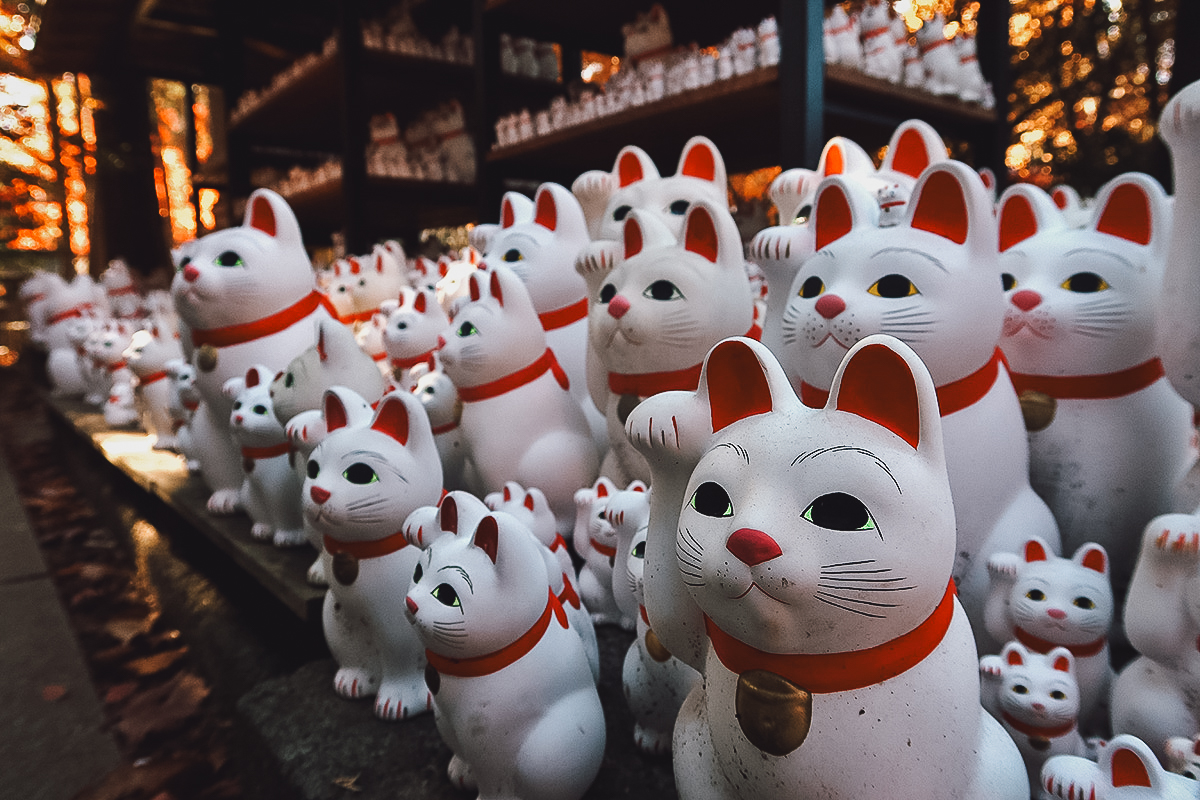SUMMARY HIGHLIGHTS
- Tokyo is massive and can be exhausting. If you plan on doing a lot of sightseeing, then be prepared to spend a few hours on public transportation everyday.
- The Tokyo Subway Ticket can be a great investment.
- To help cut down on transit time, it’s a good idea to stay in a central location, like near Shinjuku or Shibuya stations.
- You’ll never run out of things to do in Tokyo, so stay as long as you can.
Osaka is an easy destination to plan for. Nagoya is also easy. Fukuoka and Hiroshima are pretty easy as well.
Kyoto is a little more difficult but compared to Tokyo, it’s still relatively easy.
Planning a trip to Tokyo can be daunting, and a lot of that has to do with its size. It isn’t just one city but a massive metropolis that’s home to 23 wards, 26 cities, 5 towns, and 8 villages. How can you possibly fit all that in four, five, even six days?
Spoiler alert, you can’t, so don’t even try.
I’ve been to Tokyo many times, the longest stay being over three weeks, and even that didn’t feel long enough. And that was after I had already been to the city’s top tourist attractions! There just never seem to be enough hours in the day in this city.
Tokyo is exciting, but it can also be exhausting, especially when planned poorly or unrealistically, so a strategic approach is a must when visiting Japan’s capital for the first time.
In this guide, I hope to simplify and make sense of all that is Tokyo, to help you make the most of your time in this stimulating, sometimes overwhelming, yet endlessly captivating city.
EXPLORE TOKYO QUICK LINKS
To help you plan your trip to Tokyo, I’ve put together links to recommended hotels, tours, and other travel-related services here.
HOTELS
Top-rated hotels in Shinjuku, one of the best areas to stay for first-time visitors to Tokyo.
- Luxury: Keio Plaza Hotel Tokyo Premier Grand
- Midrange: Hotel Sunroute Plaza Shinjuku
- Budget: Imano Tokyo Hostel
EXPERIENCES
- Sightseeing Tour: Asakusa Cultural Walk & Matcha Making Tour
- Kimono Rental: Asakusa Kimono Photography Tour
- Food Tour: Tokyo Bar Hopping Night Tour in Shinjuku
- Cultural Experience: Learn Kintsugi and Breathe New Life Into Broken Pottery
- Market Tour: Tsukiji Fish Market Walking Food Tour in Tokyo
- Hiking Tour: Day Trip to Sacred Mt. Mitake
- Cooking Class: Cooking Classes in Tokyo
OTHER SERVICES
- Travel Insurance
- Airport Transfers: Narita Airport | Haneda Airport
- Tokyo Subway Ticket
- Japan Rail Pass
- Japan eSIM
GUIDE TABLE OF CONTENTS
TOKYO AT A GLANCE
Almost every first trip to Japan starts with Tokyo, the country’s capital. It’s an intriguing blend of ultramodern, traditional, ceremonial, quirky, and cutting edge that you can’t find anywhere else in the world, not even in Japan. Osaka is similar in some ways, but it isn’t quite like Tokyo.
Tokyo is often described as the world’s largest city, but that distinction can be a little misleading. Firstly, Tokyo isn’t just one city but a metropolis comprised of multiple wards, cities, towns, and villages. With a population of roughly 14 million, Tokyo Metropolis is the official administrative entity of Tokyo and classified as one of Japan’s 47 prefectures.
The “world’s largest city” title actually describes the Tokyo Metropolitan Area (aka the Greater Tokyo Area). It has a population of around 41 million and includes Tokyo Metropolis and parts of six neighboring prefectures (Chiba, Gunma, Ibaraki, Kanagawa, Saitama, and Tochigi).
The diagram below is a map of Tokyo Metropolis. Most tourists will only step foot in the areas in red. Made up of 23 special wards (among them Shibuya, Shinjuku, and Sumida), this area is the focus of this guide and where you’ll be spending most, if not all, of your time in Tokyo.
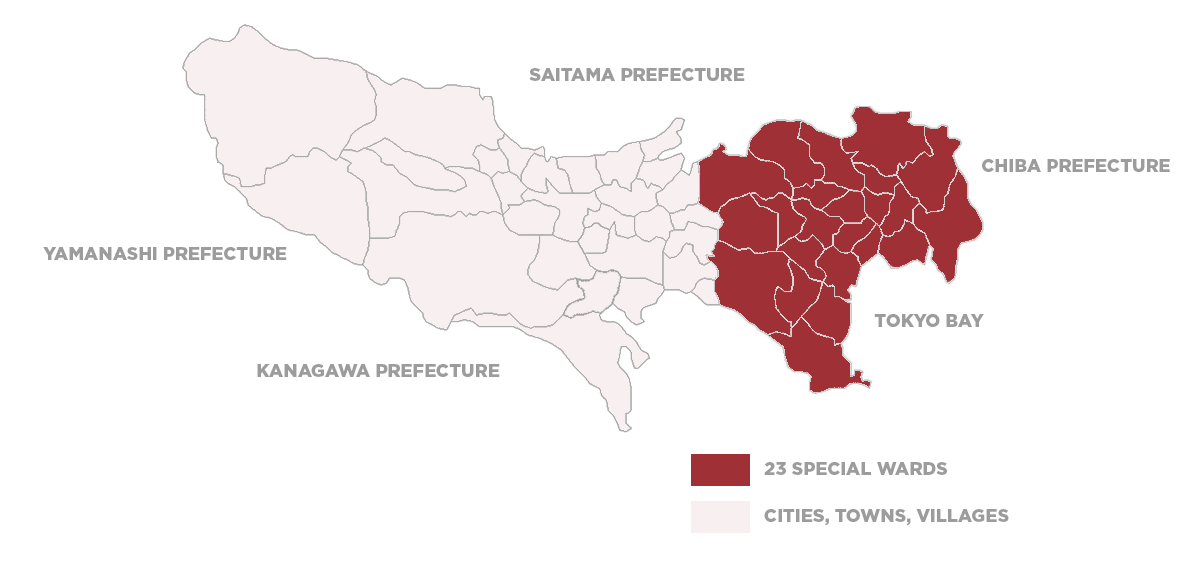
Adapted from map by user:alberth2, Copyrighted free use, via Wikimedia Commons
BEST TIME TO VISIT TOKYO
Like any major city in Japan, Tokyo is a year-round destination. Its top attractions are mostly indoors and aren’t season-specific, so you’ll find lots to do no matter what time of the year you go.
Having said that, Japan experiences four seasons so spring and fall are the most popular times to visit. Sakura trees are typically in full bloom by early April while late November to early December is usually best for fall colors.
If you’d like to experience a festival, then May is a great month to visit Tokyo. Sanja Matsuri and Kanda Matsuri – two of the city’s biggest festivals – are celebrated in mid-May. Sanja Festival is held annually while Kanda Festival takes place in odd-numbered years.
If you’re a fan of Sumo wrestling, then January, May, and September are ideal times to visit, as major tournaments are held annually at Ryogoku Kokugikan during those months.
WHERE TO STAY IN TOKYO
Choosing where to stay is one of the most important decisions you’ll make in Tokyo. Thanks to its extensive metro system, getting around won’t be a problem but you’ll need to find a good balance between cost and convenience.
Centrally located areas like Shinjuku and Shibuya are convenient but they’re typically pricier. You can find cheaper places to stay in outlying areas but be prepared to spend more time in transit.
On my last trip, I stayed in Kawaguchi in neighboring Saitama Prefecture and I spent around 2-3 hours on the metro everyday. It was exhausting and seriously cut into my actual sightseeing time.
Listed below are some of the best areas to stay in Tokyo with a brief rundown on pros and cons for each. Click on the link for a live version of the map. (Please note that marked areas are approximations only)
RED – Shinjuku
PURPLE – Shibuya
BLUE – Roppongi
YELLOW – Ginza
GREEN – Tokyo Station
ORANGE – Ueno
PINK – Sumida
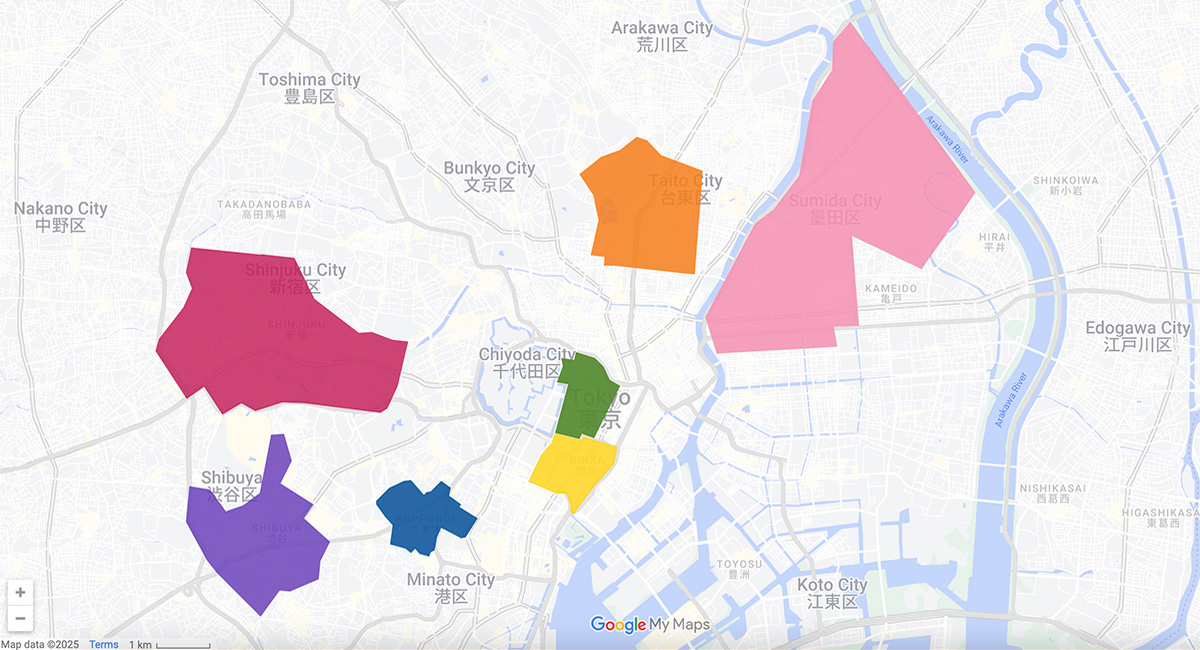
SHINJUKU
Shinjuku is one of the best and most convenient areas to stay in Tokyo. It’s a major transportation hub with thousands of restaurants, bars, shops, and tourist attractions. You could honestly stay in Shinjuku during your entire time in Tokyo and not get bored.
Highlights in Shinjuku include Shinjuku Gyoen, Omoide Yokocho, Golden Gai, and the free observation decks at the Tokyo Metropolitan Government Building.
Hotels in Shinjuku tend to be pricier but this is to be expected from such a centrally located commercial area. If you can, then I suggest trying to book your accommodations months in advance.
You can search for accommodations in Shinjuku on Booking.com or Agoda. If you can find one that suits you, then I suggest booking a hotel close to Shinjuku Station. Check out some of the top-rated hotels in the area:
- Luxury: Keio Plaza Hotel Tokyo Premier Grand
- Midrange: Hotel Sunroute Plaza Shinjuku
- Budget: Imano Tokyo Hostel
SHIBUYA
Shibuya is another lively and centrally located commercial area in Tokyo. It’s similar in feel to Shinjuku, though perhaps with a younger crowd. It’s also a major transportation hub with plenty of shops, restaurants, cafes, and tourist attractions.
Highlights in Shibuya include the famed Shibuya crossing, the Hachiko statue, Harajuku, Meiji Shrine, and Shibuya Sky.
Like Shinjuku, hotel prices in Shibuya tend to be higher so it’s best to book your accommodations as early as possible.
You can search for accommodations in the Shibuya area on Booking.com or Agoda. If you can, try to find a hotel near Shibuya Station. Check out some of the top-rated hotels in Shibuya:
- Luxury: Hyatt House Tokyo Shibuya
- Midrange: lyf Shibuya Tokyo
- Budget: almond hostel & cafe Shibuya
GINZA
You can think of the Ginza District as Tokyo’s equivalent to Fifth Avenue in New York City. It’s a bougie neighborhood that’s home to luxury hotels, big name brands, and high-end restaurants. If you’ve come to Tokyo to do some luxury shopping, then this is probably where you’ll want to be.
Highlights in Ginza include Ginza Six, Tokyu Plaza Ginza, and the Uniqlo 12-floor flagship store. Ginza is mostly about high-end shopping but the famed Tsukiji Outer Market isn’t too far from here.
As you’d expect, hotel prices in Ginza tend to be higher. But if you’re looking to stay here, then money is probably less of an issue. Even the district’s name – Ginza – sounds expensive.
If you’d like to stay in Ginza, then you can search for accommodations on Booking.com or Agoda. Check out some of the top-rated hotels in Ginza:
- Luxury: The Peninsula Tokyo
- Midrange: Dormy Inn Premium Ginza
- Budget: Tabist Ginza
TOKYO STATION
Just north of Ginza is Tokyo Station, the city’s main transportation hub. It’s the city’s most important train station and gives you direct shinkansen access to cities like Kyoto, Osaka, Hiroshima, and Nagano. If ease of transportation is paramount to you, then the area around Tokyo Station is one of the best places to stay in the city.
Aside from its convenient transportation options, the area is home to many department stores and countless restaurants. Ginza, the Imperial Palace, and MOMAT are within walking distance while Akihabara and Tsukiji Outer Market are just a quick bus or train ride away.
Like Shinjuku, hotels around Tokyo Station tend to be on the pricier side because of its prime location and excellent transportation connections.
You can search for accommodations around Tokyo Station on Booking.com or Agoda. Check out some of the top-rated hotels in the area:
- Luxury: The Tokyo Station Hotel
- Midrange: karaksa hotel TOKYO STATION
- Budget: Sotetsu Fresa Inn Tokyo-Kyobashi
ROPPONGI
Roppongi is another well-known upmarket area in Tokyo. Unlike the Ginza shopping district, it’s more of an entertainment district with lots of great museums, Michelin-starred restaurants, luxury shopping centers, and night clubs.
I remember walking in Roppongi and being stunned by how many luxury cars I saw on the street. Every other car driving by seemed to be a Lamborghini, Porsche, or Ferrari! Roppongi doesn’t have the same energy as Ginza but that may be a good thing for people looking for a quieter, more exclusive stay in Tokyo.
Some of Roppongi’s top attractions include the Mori Art Museum, the National Art Center, Tokyo Tower, and Zozoji Temple.
Visit Booking.com or Agoda to search for accommodations in Roppongi. Here are some of the top-rated hotels in the area:
- Luxury: Grand Hyatt Tokyo
- Midrange: Candeo Hotels Tokyo Roppongi
- Budget: APA Hotel Roppongi SIX
UENO
If you’d like to stay in a more traditional part of Tokyo, then Ueno may be for you. It isn’t as glitzy as Shinjuku, Shibuya, or Ginza but it puts you close to some of Tokyo’s top cultural attractions like Tokyo National Museum, Ueno Park, Ameyoko Market, and Senso-ji. Plus, accommodations in Ueno are generally cheaper.
You can search for accommodations in Ueno on Booking.com or Agoda. Check out some of the top-rated hotels in the area:
- Luxury: NOHGA HOTEL UENO TOKYO
- Midrange: ICI HOTEL Ueno Shin Okachimachi
- Budget: Hotel PRELE
SUMIDA
Like Ueno, Sumida is a great place to look for cheaper accommodations in Tokyo. It’s situated to the east of Asakusa, across the Sumida River. Until fairly recently, tourists had few reasons to go to Sumida but Tokyo Skytree changed all that.
Sumida isn’t as centrally located as some of the other places on this list but it is a quiet area that’s home to a few places of interest. Aside from Tokyo Skytree, other notable attractions include Edo-Tokyo Museum, Tobu Museum, and the Ryogoku Sumo District.
You can search for accommodations in Sumida on Booking.com. Check out some of the top-rated hotels in the area:
- Luxury: MOXY Tokyo Kinshicho
- Midrange: KAIKA TOKYO by THE SHARE HOTELS
- Budget: Petit Grande Miyabi
RELATED ARTICLE: Luxury Experiences in Tokyo
THINGS TO DO IN TOKYO
Visit a Temple or Shrine
Tokyo’s dichotomy of cutting edge and traditional is part of what makes the city so fascinating. And there’s no better place to appreciate the latter than at its many Buddhist temples and Shinto shrines.
Senso-ji (pictured below), Tokyo’s oldest temple, is easily the most famous but it’s also the most crowded. Meiji Shrine is just as well-known but it offers a more serene experience thanks to its location in a forested park area.
There are many other temples and shrines in Tokyo but some of the most notable include Zozo-ji, Tennoji, and my personal favorite – Gotokuji. Gotokuji Temple is the birthplace of the auspicious beckoning cat charm.
If you’re visiting Tokyo for the first time and had time for just one temple, then it would have to be Senso-ji. You can easily visit Senso-ji Temple on your own, but if you’d prefer to go with a guide, then you may be interested in this Asakusa walking tour.
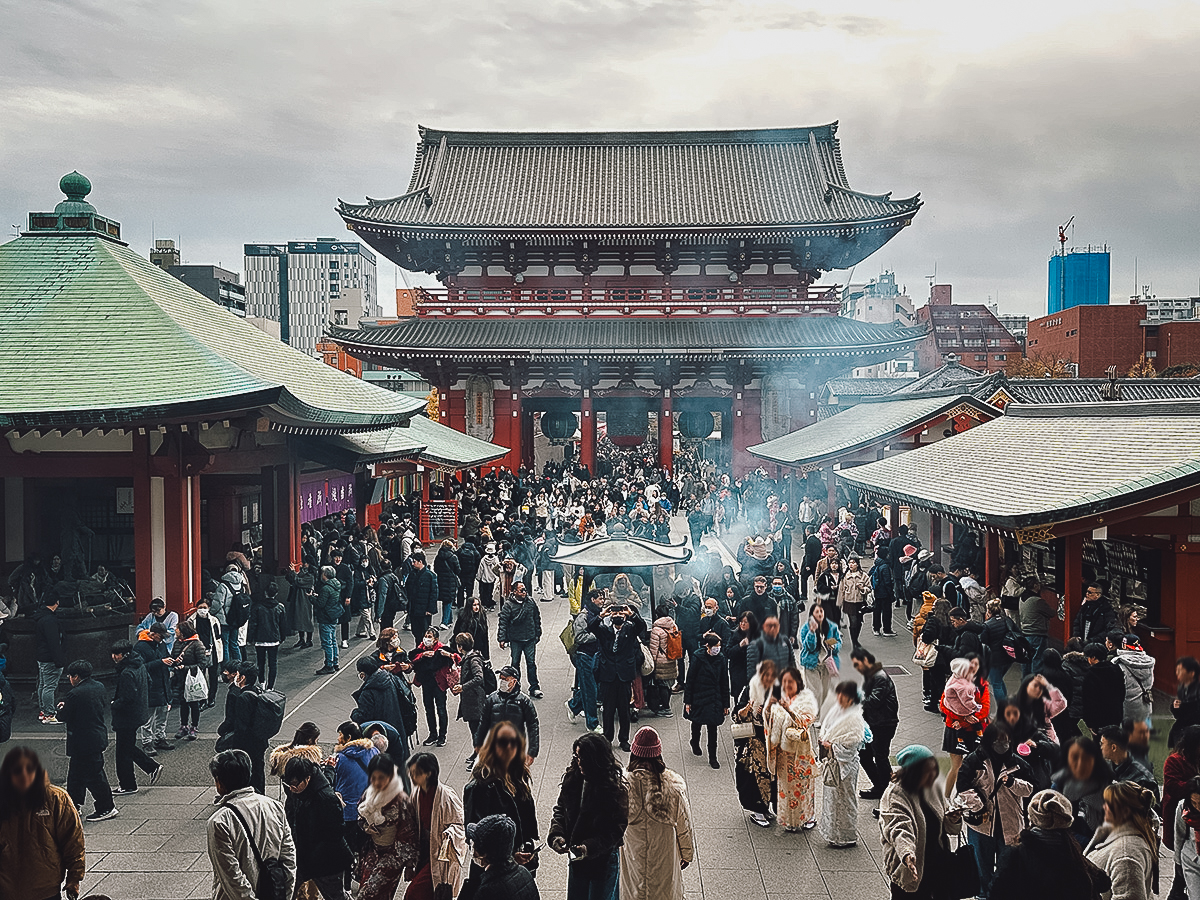
Take a Stroll in a Landscaped Garden
Tokyo is exciting, but it can also be exhausting. There’s no better place to enjoy a few relaxed hours to recharge than at a landscaped garden. In Tokyo, there are a few you can visit.
Some of the most popular landscaped gardens in Tokyo include Shinjuku Gyoen, Rikugien (pictured below), and Koishikawa Korakuen. The Imperial Palace East Gardens are free to enter while Kiyosumi Gardens offer something a little more off-the-beaten-path.
Personally, enjoying matcha with wagashi at a landscaped garden is one of my absolute favorite things to do in Japan.
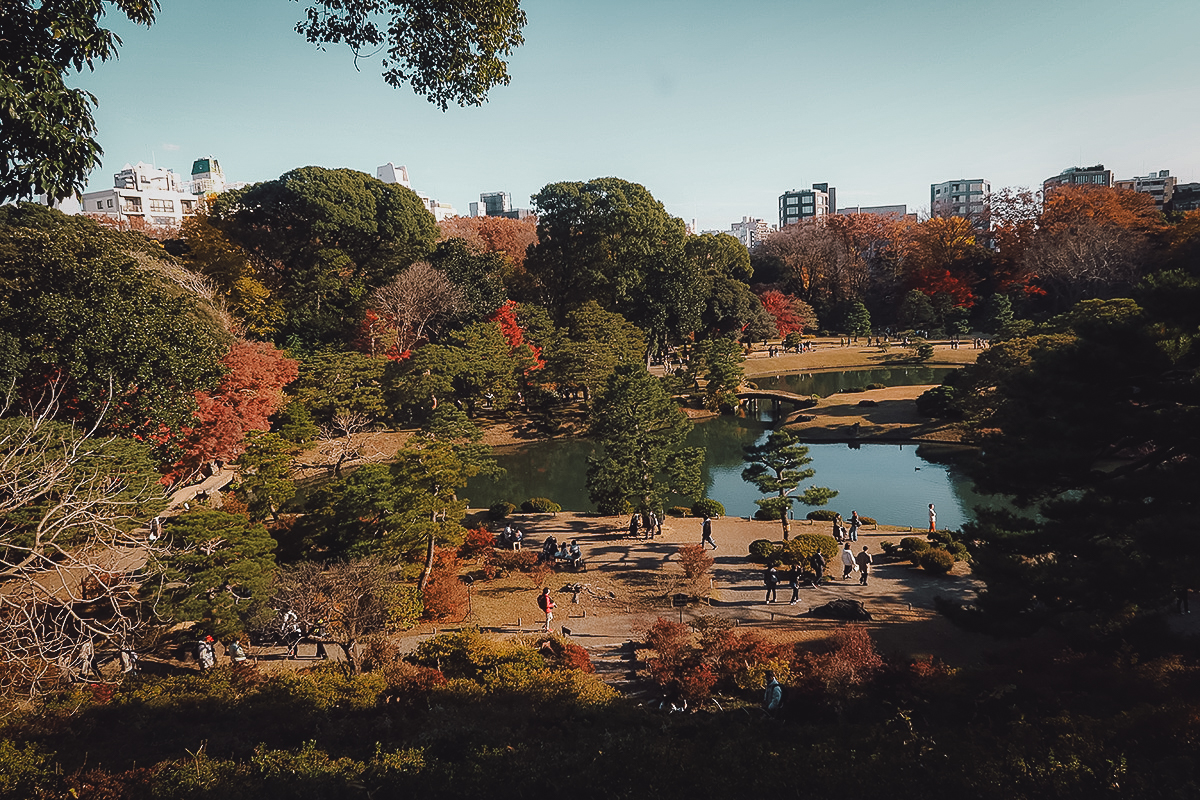
Get Lost in Tokyo’s Many Cool Neighborhoods
Tokyo is home to many interesting tourist attractions but let’s be honest, you don’t need to visit them to have an amazing time in Tokyo. You’ll be just as happy exploring its many cool neighborhoods like Shinjuku, Shibuya, Ginza, and Akihabara.
Those are some of the most well-known – and unmissable if you’re on your first trip to Tokyo – but there are many other interesting neighborhoods you may not have heard of like Shimokitazawa, Koenji, Jimbocho, and Daikanyama. Check out my article on Tokyo’s coolest neighborhoods for more.
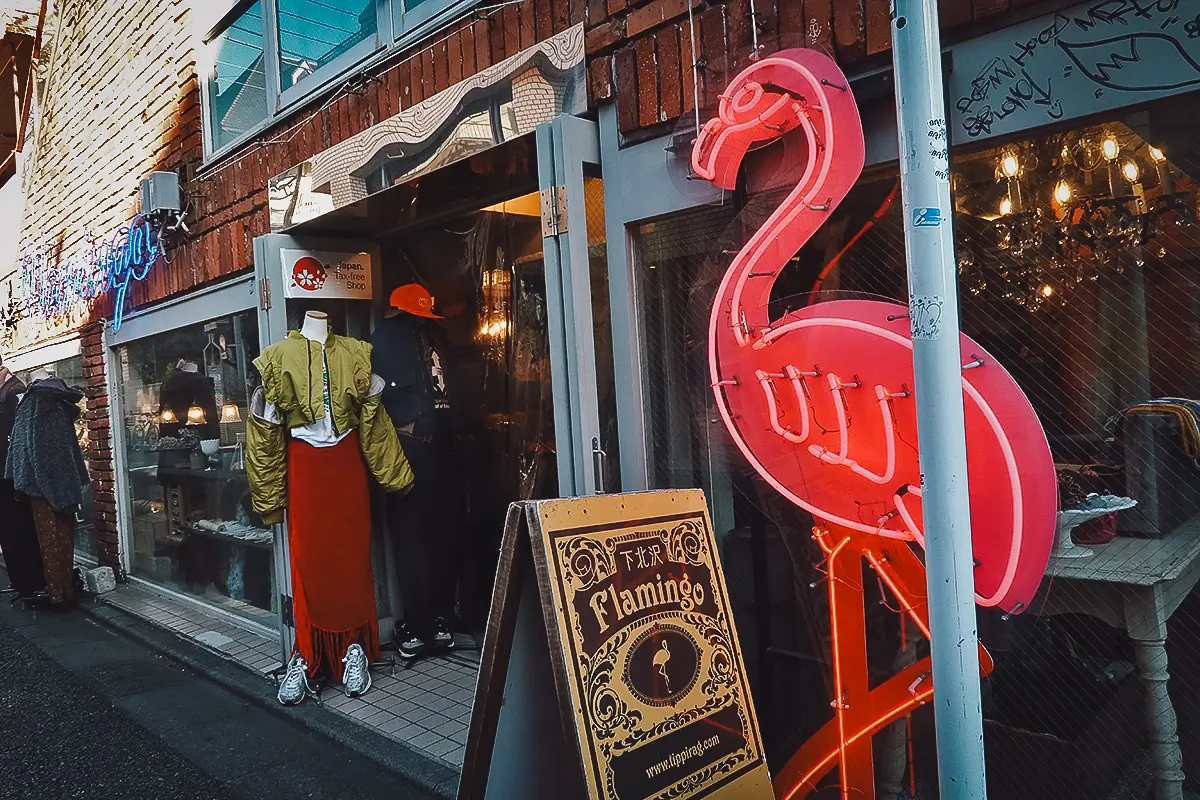
Eat the Freshest Seafood at Tsukiji Market
Tokyo is no stranger to good seafood but some of the freshest (and cheapest) can be found at the iconic Tsukiji Market.
Tsukiji Market has been a staple on Tokyo itineraries for decades, thanks to the tuna auctions held in its inner market. The auctions were moved to Toyosu Market in 2018 but Tsukiji’s outer market remains as busy as ever. It’s a great place to enjoy cheap seafood in a slightly frenzied but fun environment.
It’s easy enough to visit Tsukiji Market on your own, but if you’d prefer to go with a guide, then you may be interested in this Tsukiji Market food tour.
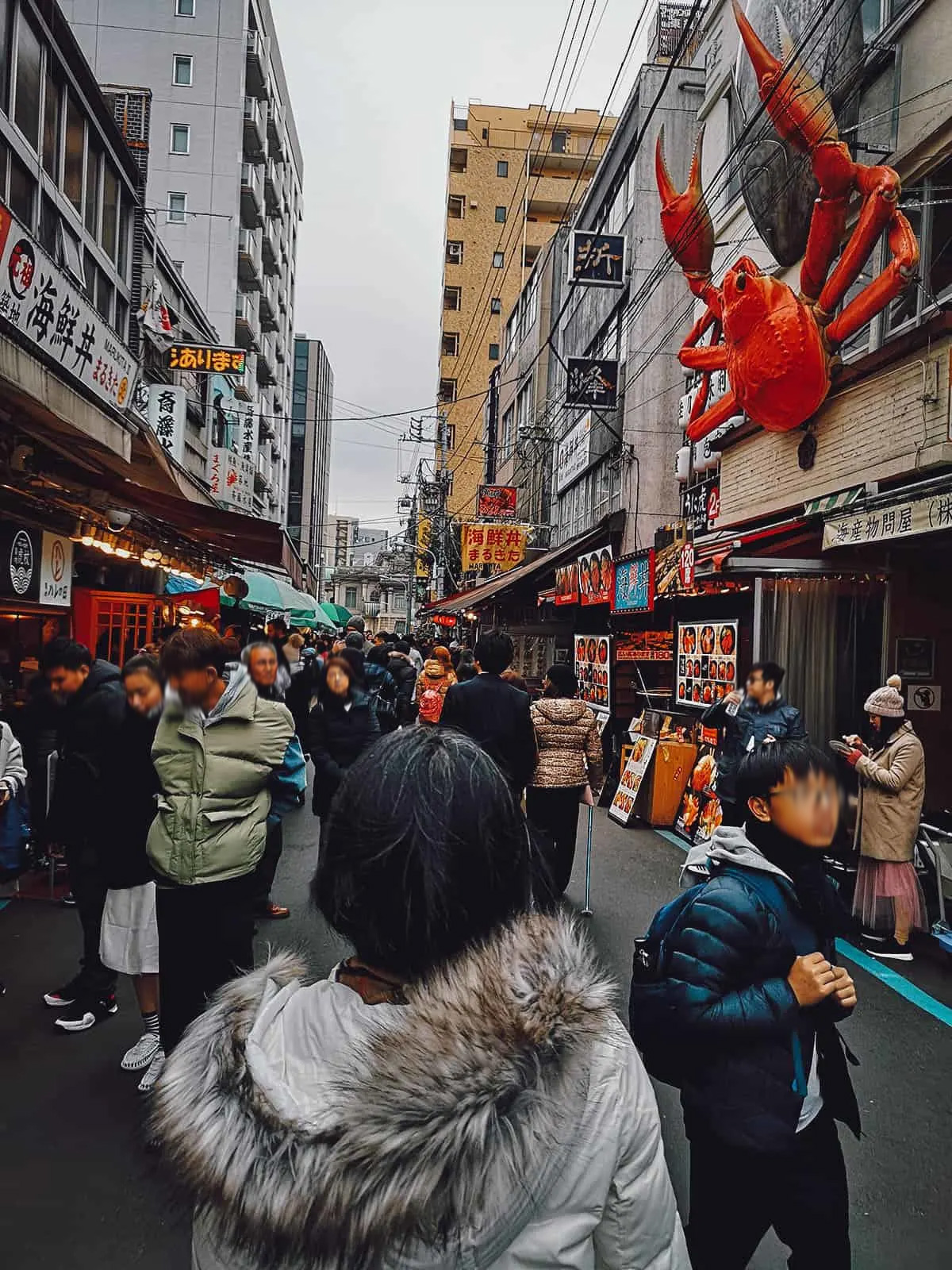
Visit a Museum
Given Tokyo’s immense size, it’s no surprise that the city is home to dozens of outstanding museums catering to a diverse array of interests.
If you like art, then be prepared to spend an entire day in Roppongi. Known collectively as Art Triangle Roppongi (ATRo), Mori Art Museum, Suntory Museum of Art, and The National Art Center (pictured below) are a slick trio of art museums located within minutes of each other in Roppongi Hills.
Parents traveling with kids can kill a few hours at the National Museum of Nature and Science while fans of Studio Ghibli will undoubtedly visit the popular Ghibli Musuem. If oddball museums are more your thing, then you cannot miss the Meguro Parasitological Museum.
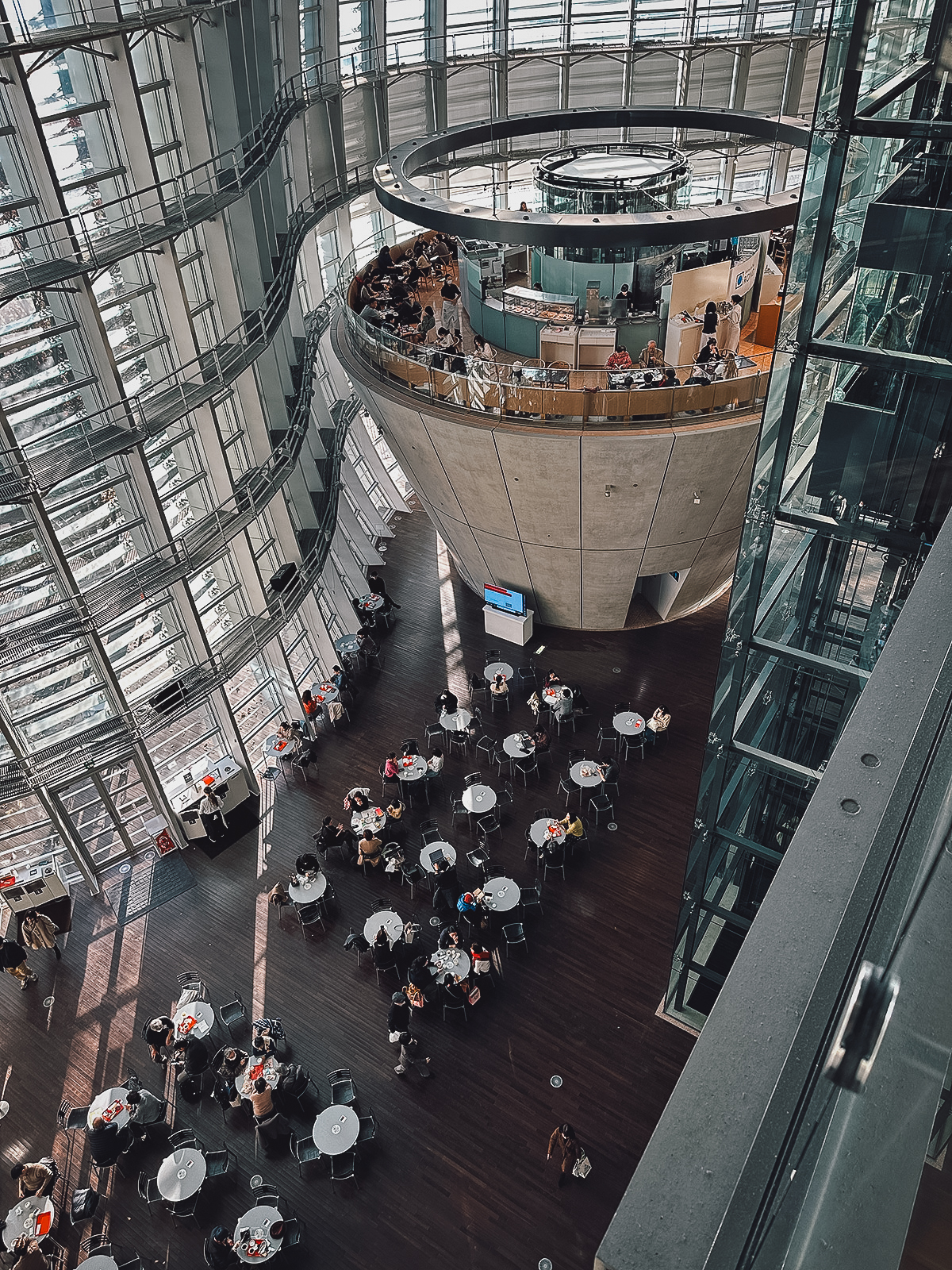
Experience teamLab
These hugely popular multimedia exhibits by the teamLab art collective have been a social media favorite ever since Borderless first opened in Odaiba in 2018. Branded as the world’s first digital art museum, it was a groundbreaking concept that allowed visitors to interact with an immersive series of ever-evolving digital artwork.
At present, there are two teamLab museums in Tokyo – teamLab Borderless and teamLab Planets. I took the picture below from the original Borderless in Odaiba but that museum has since been relocated to Azabudai Hills near Roppongi.
One teamLab experience is enough for me so I don’t intend to go to Planets, but the unique experience of wading through a water-based installation does sound intriguing. You’ll need to remove your shoes and roll up your pants to do so.
teamLab tickets remain some of the hottest in Tokyo so booking them in advance is recommended (teamLab Borderless | teamLab Planets).
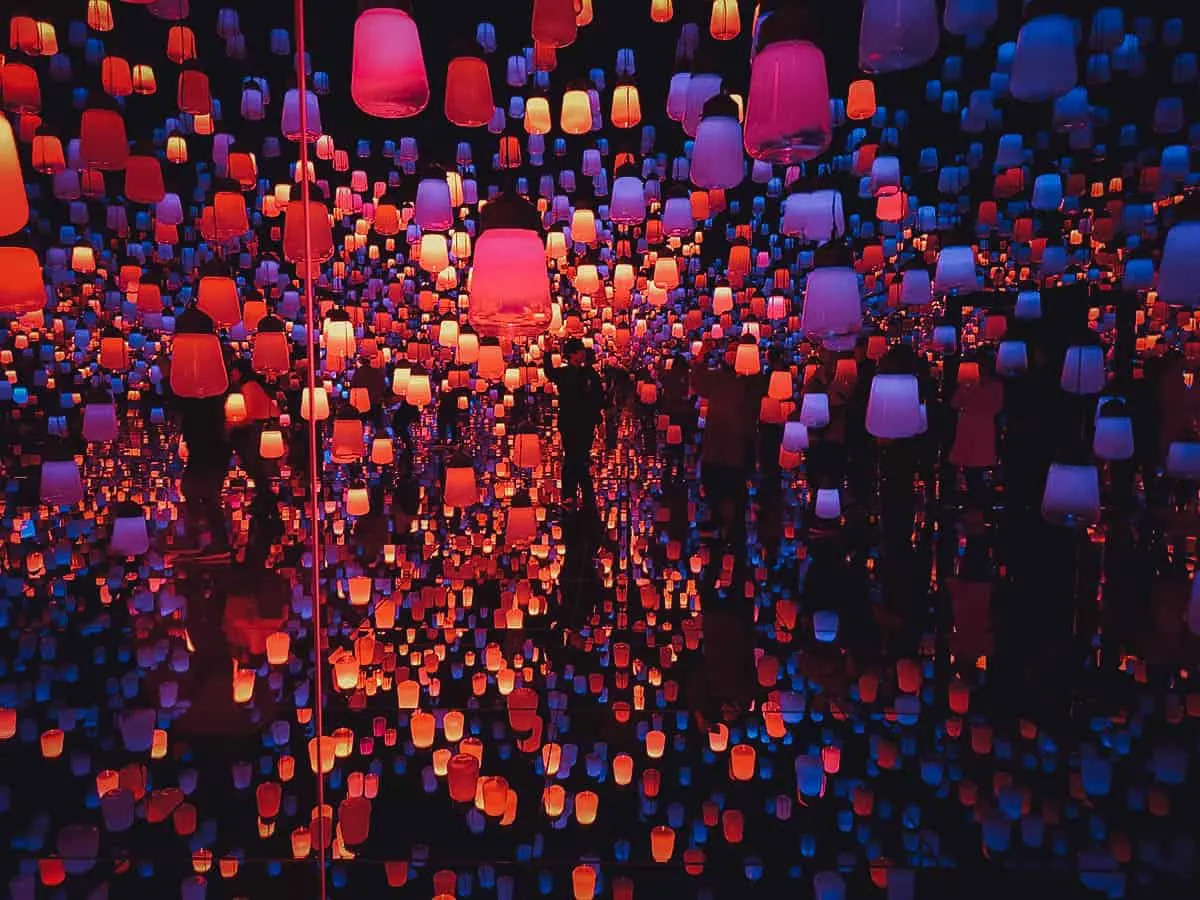
See Tokyo From Above
Just how massive of a city is Tokyo? Climb up to the observation deck of Tokyo Skytree and see for yourself.
Measuring 634 meters (2,080 ft) in height, Tokyo Skytree is a television broadcasting tower that’s currently the tallest structure in Japan. It has two observation decks – one at 350 meters (1,148 ft) and another at 450 meters (1,476 ft) – offering the most spectacular bird’s eye views of Tokyo.
Tokyo Skytree is the tallest but other structures offering similar views include Tokyo Tower and Shibuya Sky. If you’d rather not pay for the view, then the free observation decks at the Tokyo Metropolitan Government Building are probably your best option.
You can get tickets to the observation decks at the gate or in advance through Klook: Tokyo Skytree | Tokyo Tower | Shibuya Sky.
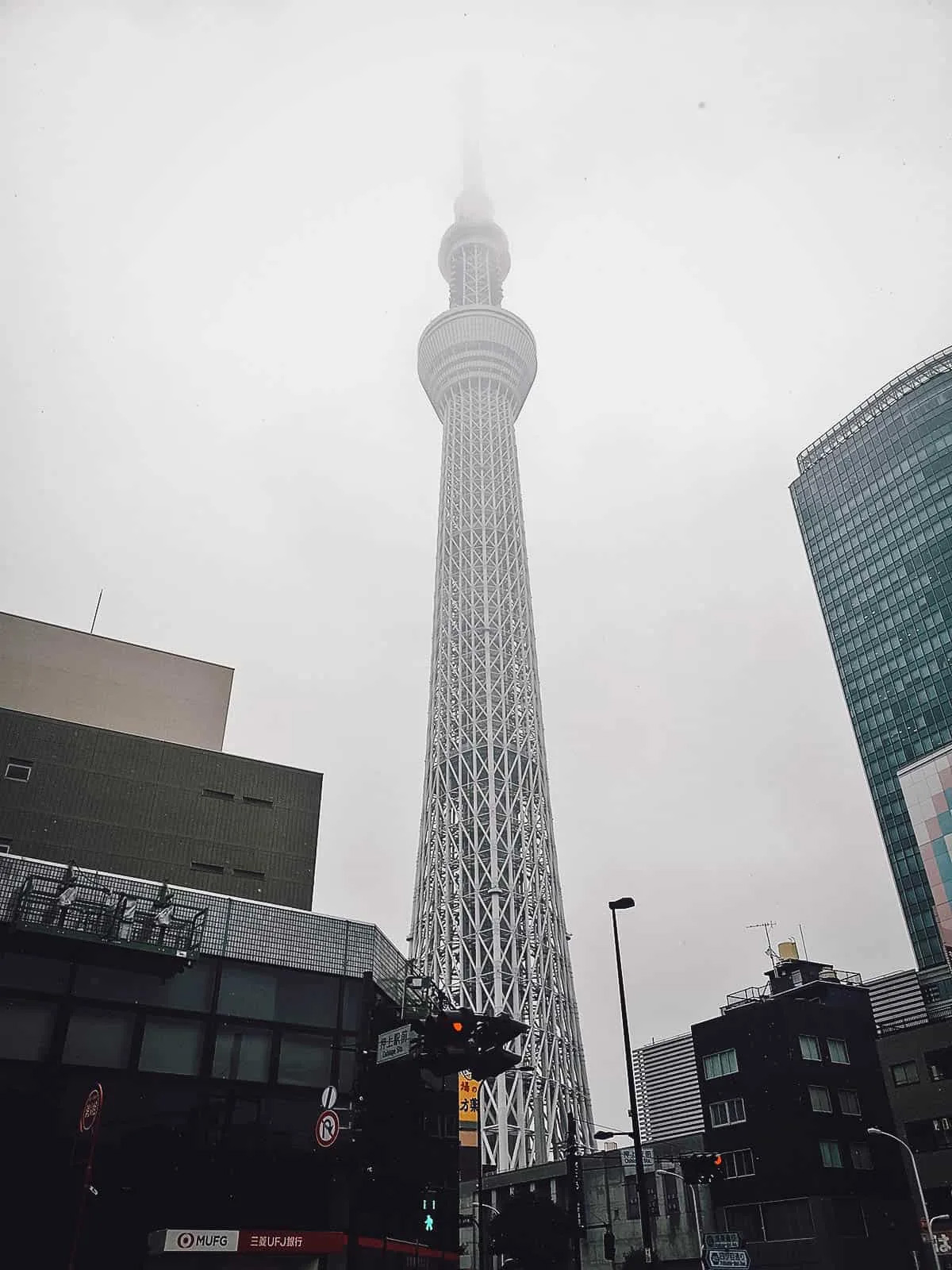
Go Izakaya Hopping at a Yokocho
You can get a drink anywhere in Tokyo but few venues are more atmospheric than a yokocho, a narrow alleyway or network of alleys filled with tiny bars, restaurants, and izakayas. They’re a vestige of post-war Japan when black market stalls for goods and food popped up throughout the country, usually around train stations.
There are a few yokochos you can visit in Tokyo, but one of the most well-known is Omoide Yokocho, conveniently located just outside Shinjuku Station. Not far from there is the equally popular Golden Gai. It technically isn’t a yokocho but a similar network of small alleyways crammed with over 200 tiny bars and restaurants.
Other notable yokochos you can visit in Tokyo include Harmonica Yokocho (Kichijoji), Sankaku Chitai (Sangenjaya), and Ebisu Yokocho (Ebisu).
It’s easy enough to visit a yokocho on your own but if you’d like to go with a guide, then you may be interested in one of these izakaya tours (Get Your Guide | byFood).
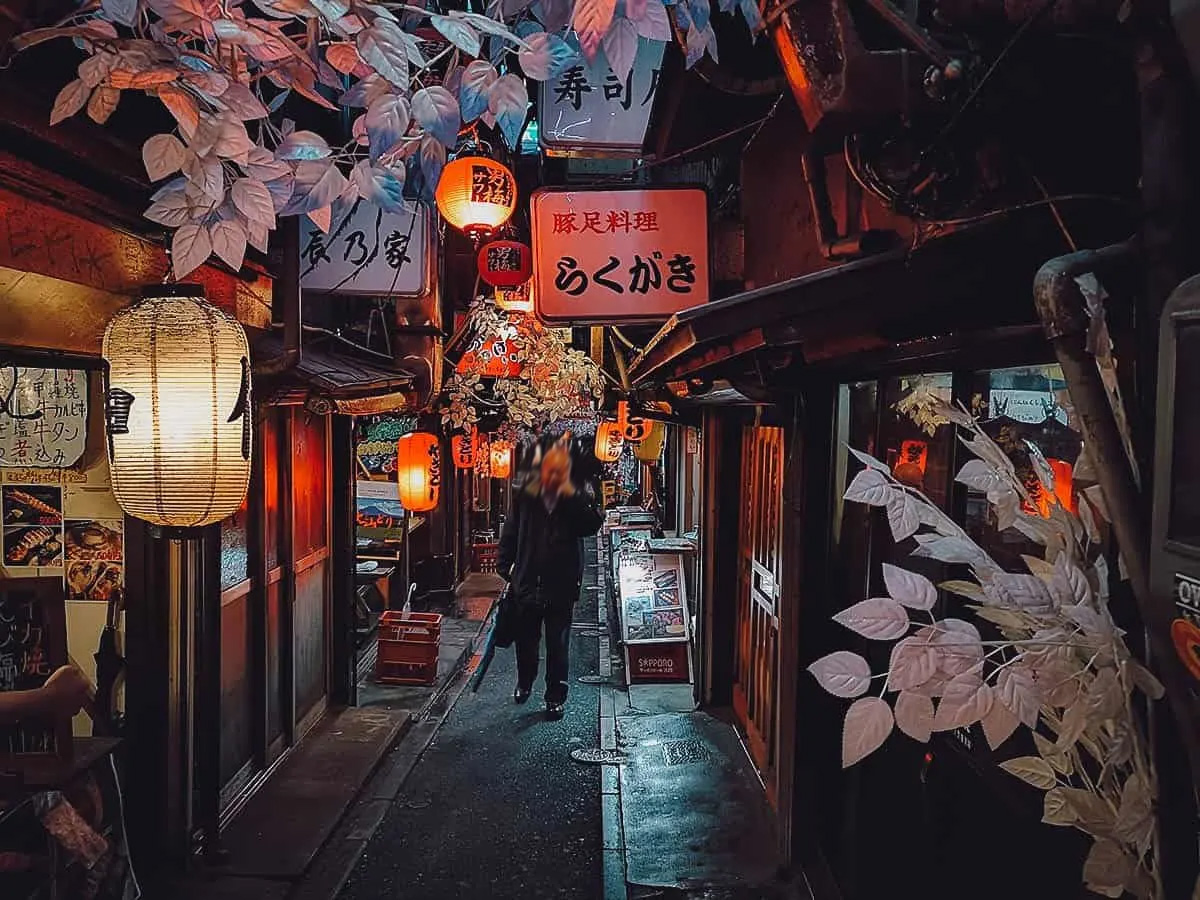
Discover the Underground World of Depachikas
I’ll never forget my first depachika experience. My best friend took me to a Hankyu depachika in Osaka and introduced me to USD 200 designer melons. I didn’t get to try them of course, but I’ve never looked at fruit the same way since.
Much more than just expensive fruit, depachikas are high-end food markets located in the basement of luxury department stores. They’re home to a wide range of high-quality gourmet food products like beautifully packaged sweets, bento boxes, top-quality beef, baked goods, designer fruit, and premium spirits.
There are dozens of depachikas you can visit in Tokyo. Some of the most notable include the Isetan in Shinjuku, the Mitsukoshi in Ginza, and the Daimaru inside Tokyo Station.
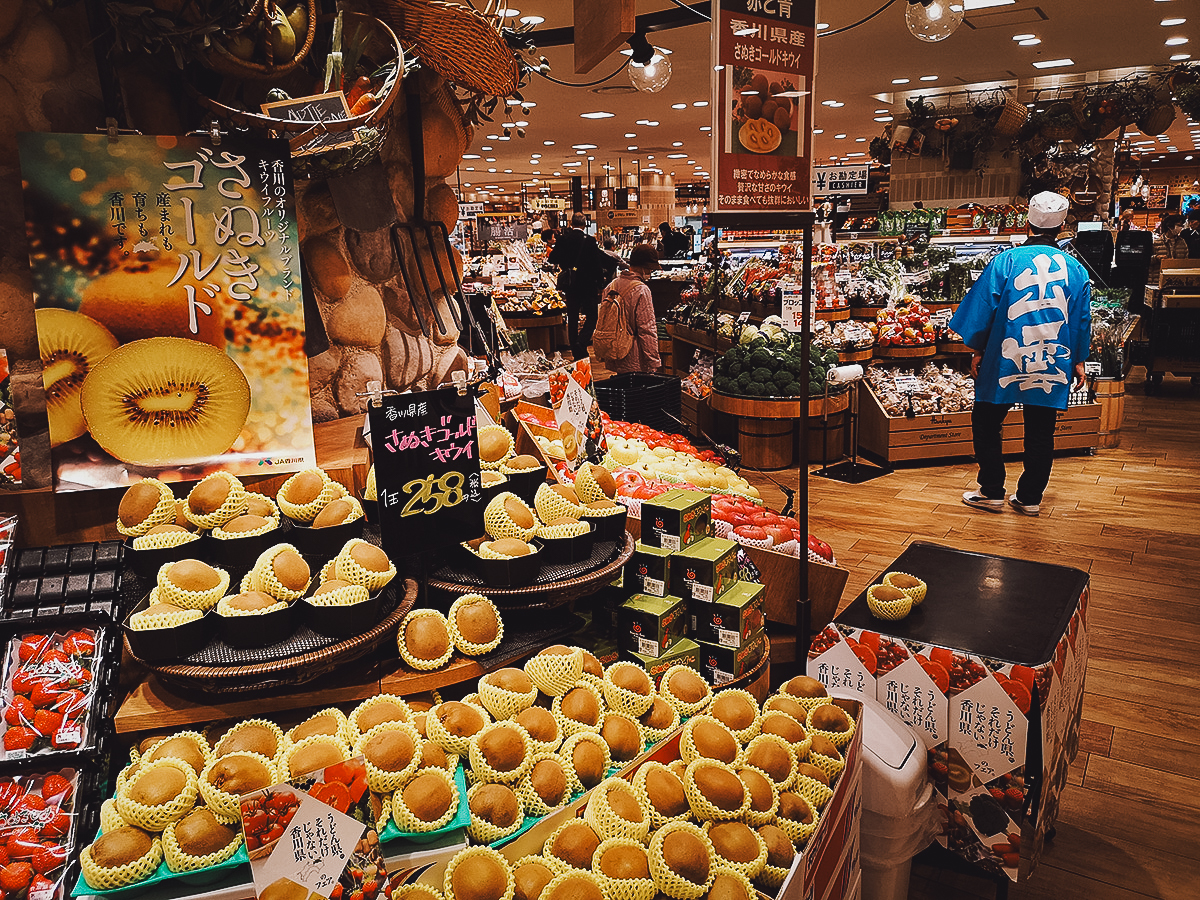
Embrace Your Inner Otaku
The quickest translation for otaku is “geek”, but it means more than that. It refers to someone with an all-consuming passion for something, usually anime or video games, but it can apply to other hobbies and subcultures as well. Personally, I like to think of myself as a Japan otaku.
The first place that comes to mind when you think of otaku culture in Tokyo is Akihabara, a virtual wonderland of anime stores, gaming arcades, maid cafes, and electronics shops.
Serious collectors, however, flock to Nakano Broadway, a multi-story shopping complex teeming with stores selling all kinds of collectibles like vintage toys, posters, books, trains, dolls, and luxury watches.
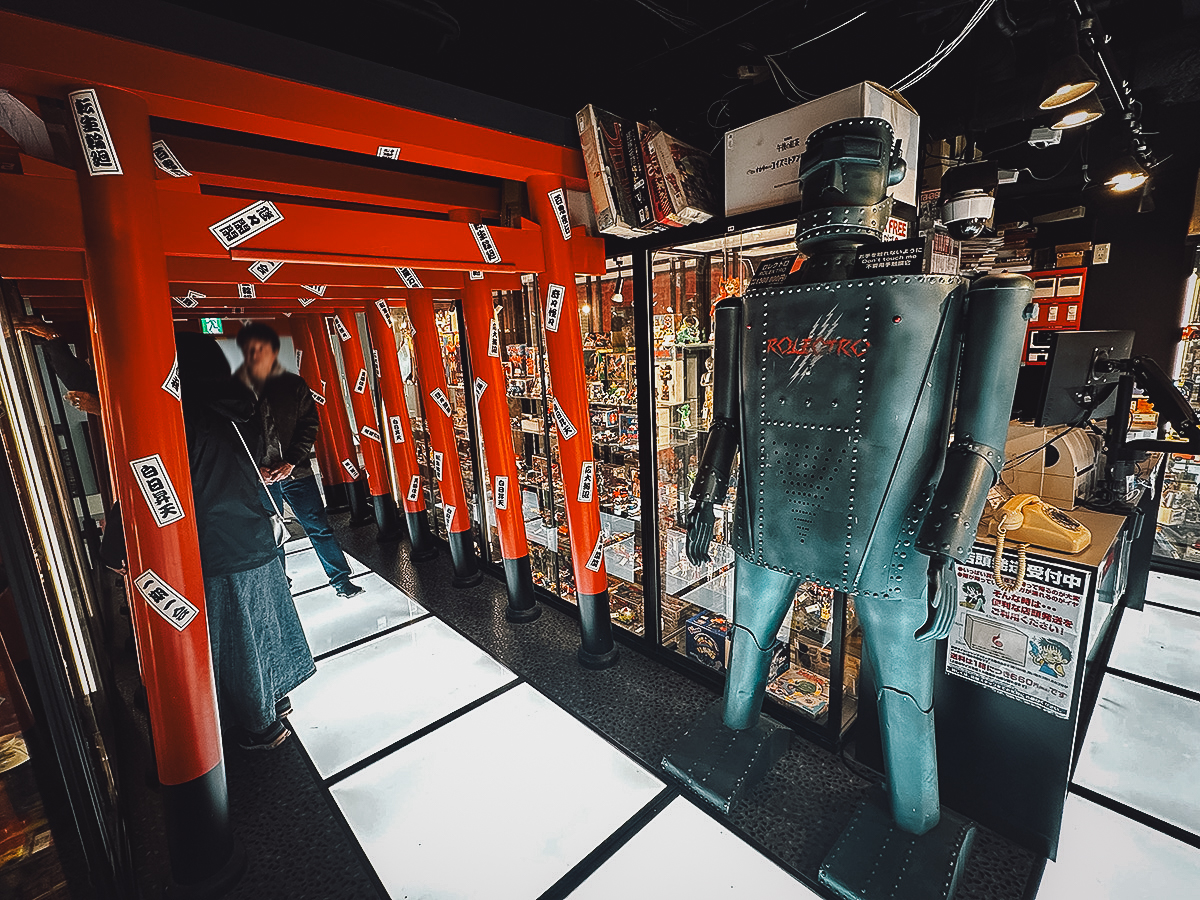
Watch Sumo
How can one country contribute so much cultural coolness to the world? Thanks to Japan, we have samurais, ninjas, geishas, and Sumo. I’ve been obsessed with Sumo wrestling ever since I binge watched the Sanctuary series on Netflix.
Ryogoku District in Sumida is known as Tokyo’s Sumo Town. It’s home to the Sumo stadium (Ryogoku Kokugikan), many top-ranked Sumo stables, and dozens of restaurants serving chanko nabe – the high-calorie hot pot dish that wrestlers eat to maintain their massive bulk.
Sumo tournaments are held at Ryogoku Kokugikan every January, May, and September, but you can watch a Sumo practice (Magical Trip | Wabunka) at any time of the year.
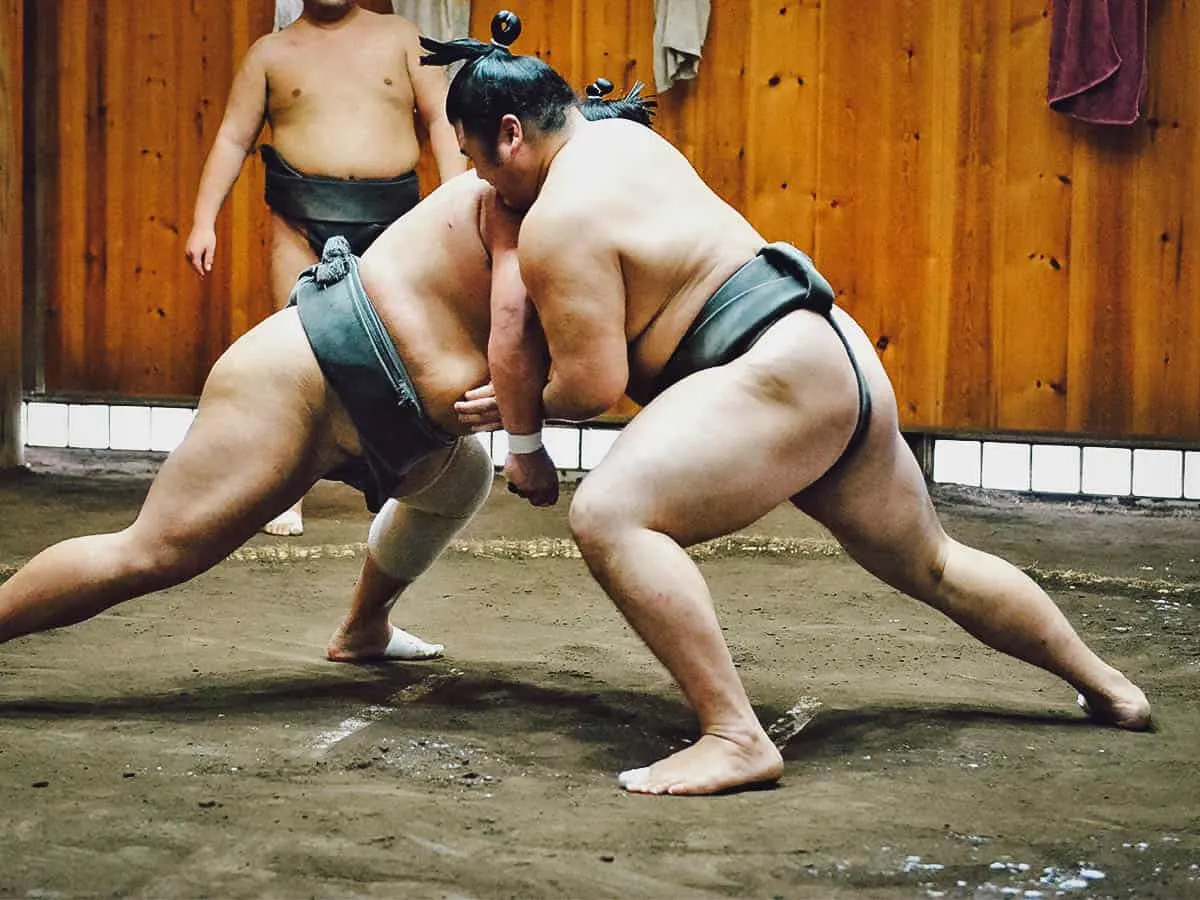
Photo by Dr. Gilad Fiskus via Shutterstock
Cultural or Quirky? Experience Something Unique in Tokyo
Japan is one of the most culturally captivating countries in the world. From enjoying tea with a geisha to fixing broken pottery using the art of kintsugi, Japan offers experiences that you can’t have anywhere else. If you’d like to enjoy a unique, culturally immersive experience in Tokyo, then you need to check out Wabunka.
If offbeat or silly is more your thing, then perhaps you’d rather go go-karting in a Pikachu costume or step into the playful world of a maid cafe. Personally, I haven’t done either (and I never will), but they are undeniably quirky and so uniquely Japan.
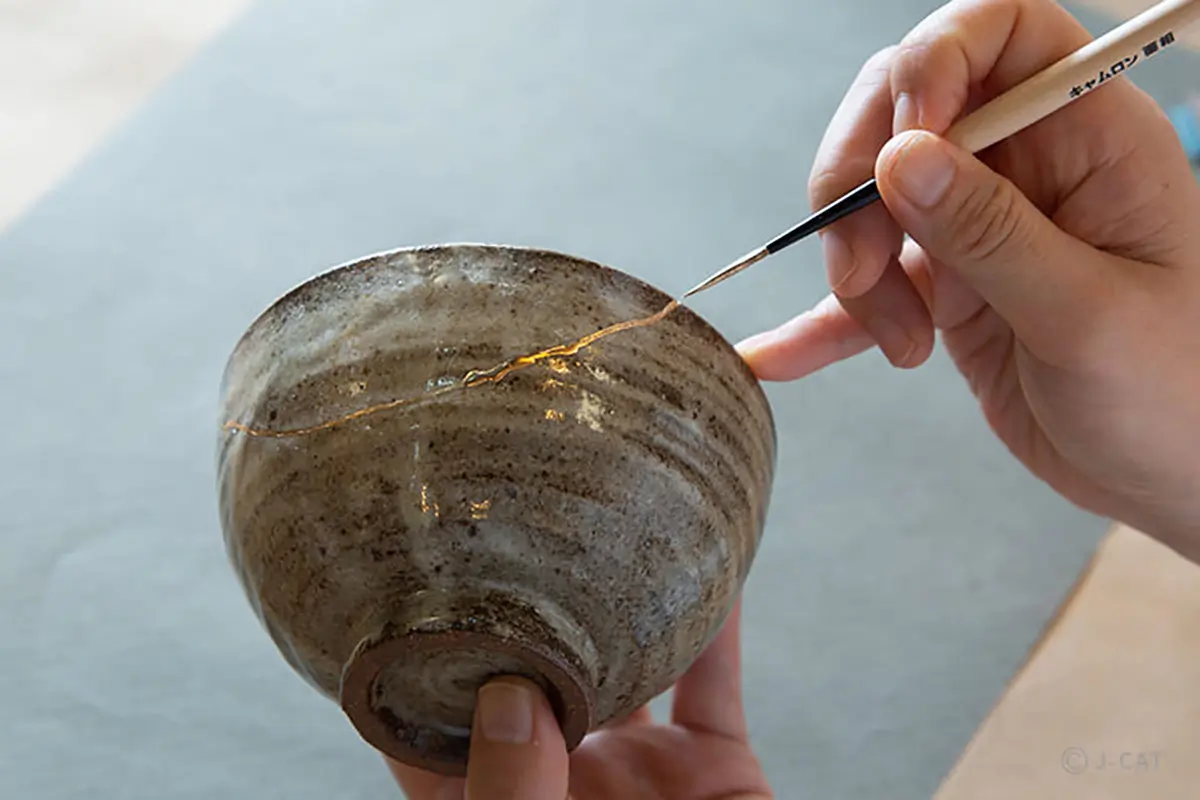
Image courtesy of Wabunka
Take a Cooking Class
If you like to cook and have a fondness for Japanese food, then why not take a cooking class? I’ve taken many cooking classes around the world, including one in Tokyo, and the experience always gives me a better understanding and appreciation for the local cuisine.
From making sushi to crafting wagashi and packing the cutest bento boxes, you’ll have dozens of cooking classes to choose from in Tokyo on airKitchen and byFood.
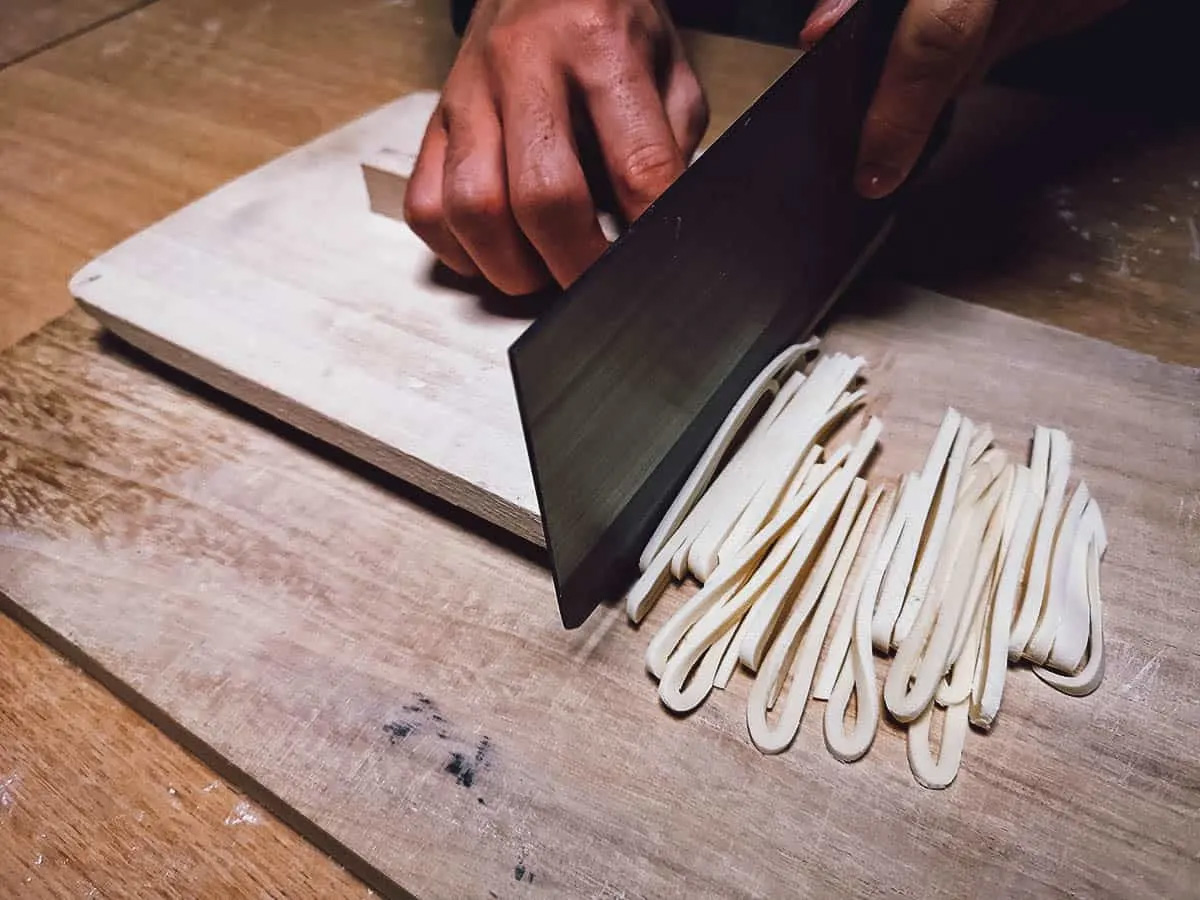
DAY TRIPS FROM TOKYO
These are some of the most popular but be sure to check my article on fun day trips from Tokyo for more recommendations. If you plan on doing multiple consecutive day trips from Tokyo, then a Tokyo Wide Pass may be a worthwhile investment.
Kawagoe
Located in Saitama Prefecture, less than hour away from central Tokyo, Kawagoe is one of the easiest day trips you can make from the capital. Nicknamed “Little Edo”, it’s a former castle town known for its well-preserved warehouses and traditional architecture, none more eye-catching than its old bell tower in the heart of the Old Town.
Many of the old buildings along the town’s main street have been converted into restaurants, shops, and teahouses. Eating street food is a must here, along with satisfying your sweet tooth at the many traditional candy shops along Kashiya Yokocho.
It’s easy to visit Kawagoe on your own, but you may want to check out Get Your Guide or Klook for a list of tours and travel deals to Kawagoe.
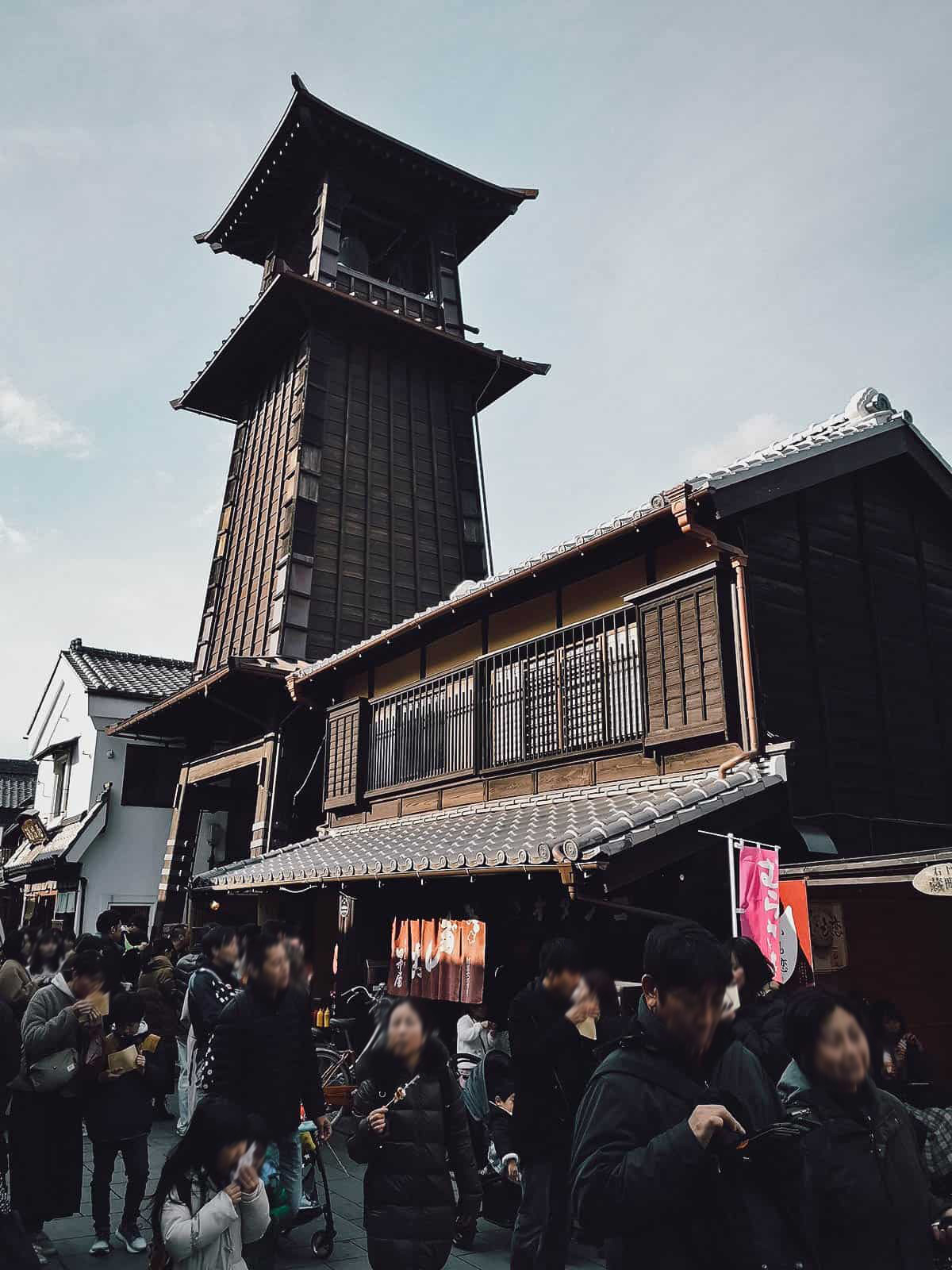
Kamakura and Enoshima
Thanks to their proximity, Kamakura and Enoshima are among the most popular day trips you can make from Tokyo. They’re located less than half an hour apart by train in Kanagawa Prefecture.
Kamakura is famous for its many interesting temples and shrines (hence the nickname “Kyoto of Eastern Japan”) while Enoshima is a small island known for its cluster of shrines, caves, and sweeping ocean views. Connected by bridge to the mainland, the area around Enoshima is one of the most popular beach destinations near Tokyo.
You’ll need to start early but you can visit both on the same day. If you’d prefer to go with a guide, then there are a few tours (Get Your Guide | Klook) that can take you to both Kamakura and Enoshima with transportation already included.
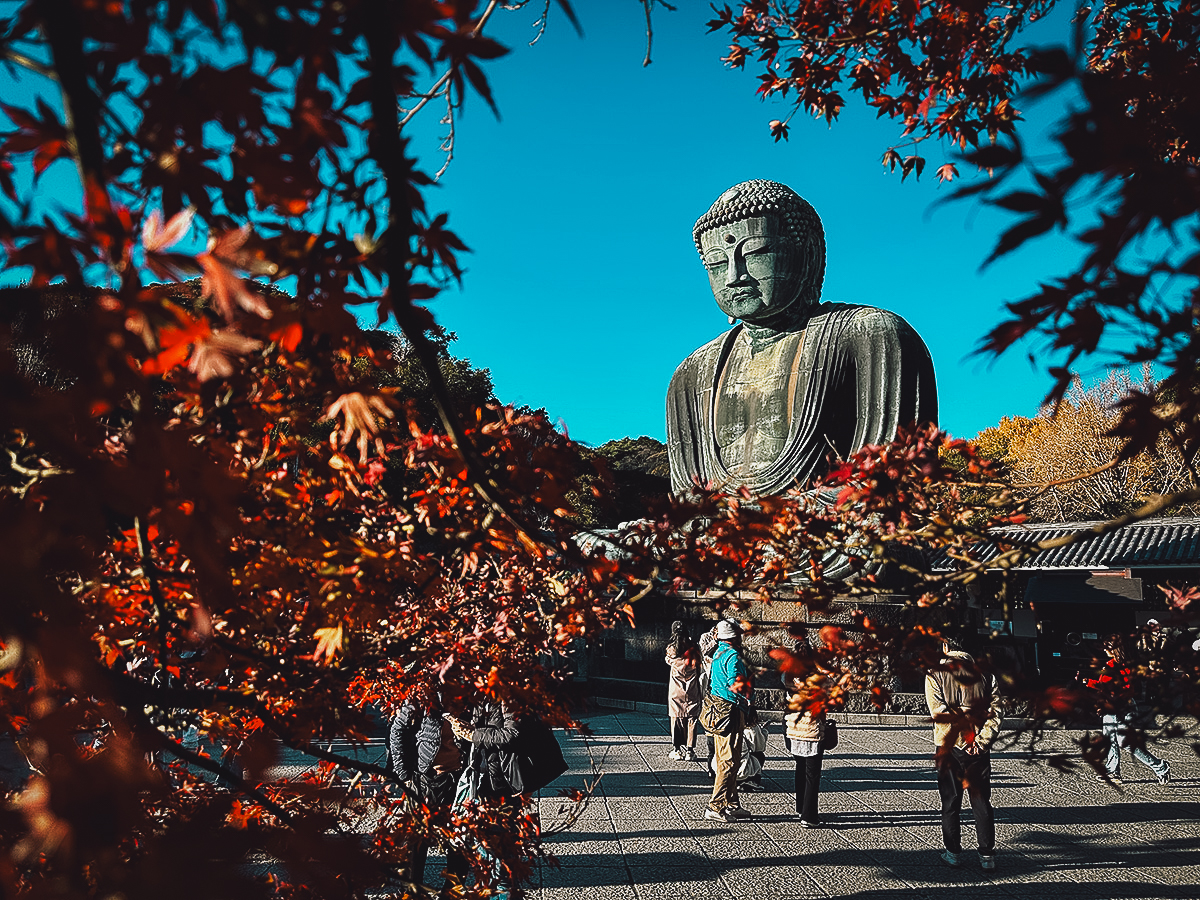
Kawaguchiko
Lake Kawaguchi is arguably the most popular day trip destination from Tokyo, and with good reason! On a clear day, this lake and onsen town in Yamanashi Prefecture offers some of the most spectacular views of the iconic Mt Fuji.
Aside from basking in the views of Mt Fuji, popular activities in Kawaguchiko include cycling around the lake, visiting one of several museums in the area, and soaking in an onsen.
Visit Get Your Guide and Klook for a list of tours and attraction deals around Lake Kawaguchi.
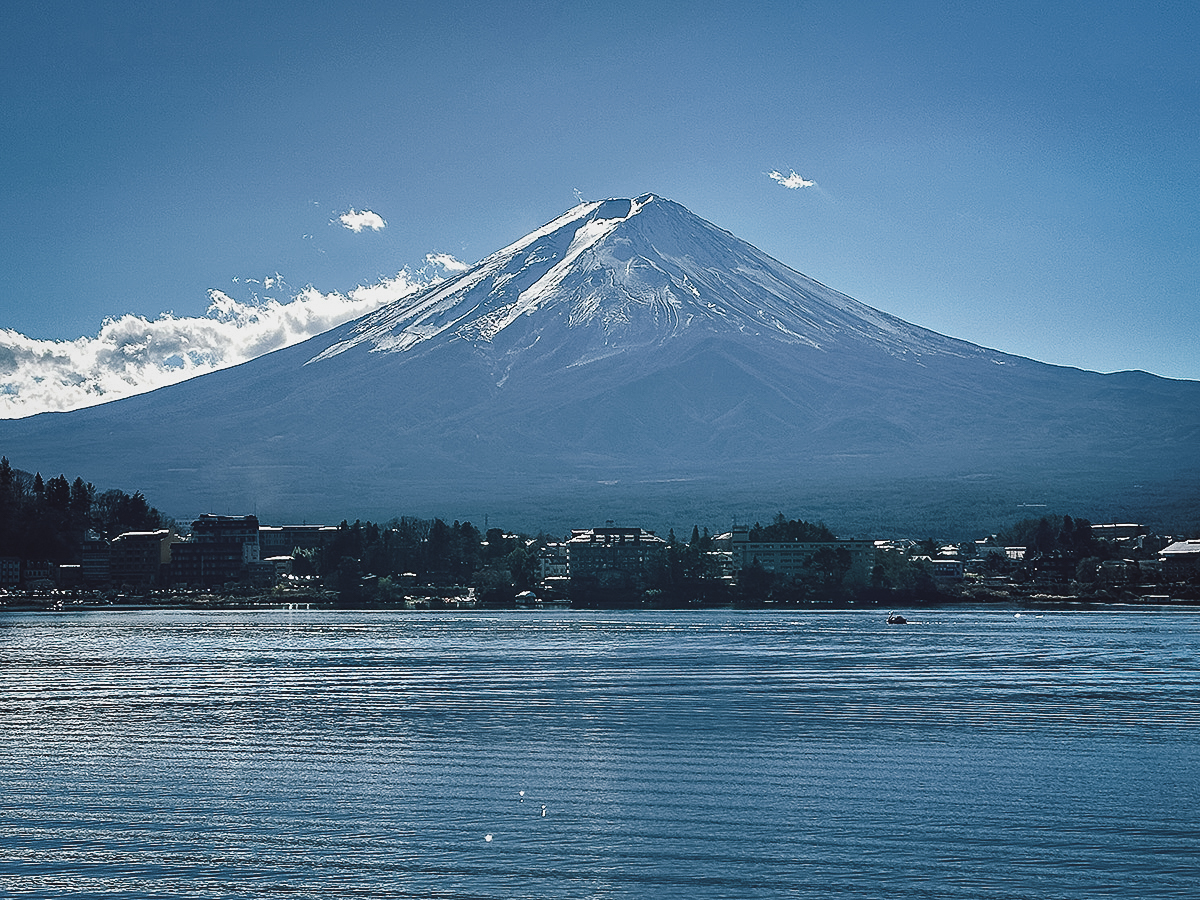
Hakone
Hakone is another destination that offers iconic views of Mt Fuji. The views may not be as close as they are from Lake Kawaguchi, but you’ll have lots more to see and do in Hakone.
Hakone is an atmospheric area known for its many onsen resorts, temples, hiking trails, and art museums. Located about two hours southwest of Tokyo, many people visit Hakone on a day trip but I do recommend staying the night to fully appreciate the place. Visiting for the day will feel quite rushed.
Check out Get Your Guide and Klook for a list of tours and attraction deals in Hakone. Whether you stay overnight or just visit for the day, the Hakone Free Pass can be a great investment. It provides unlimited access to the local transportation network for two or three days, along with discounts to various attractions.
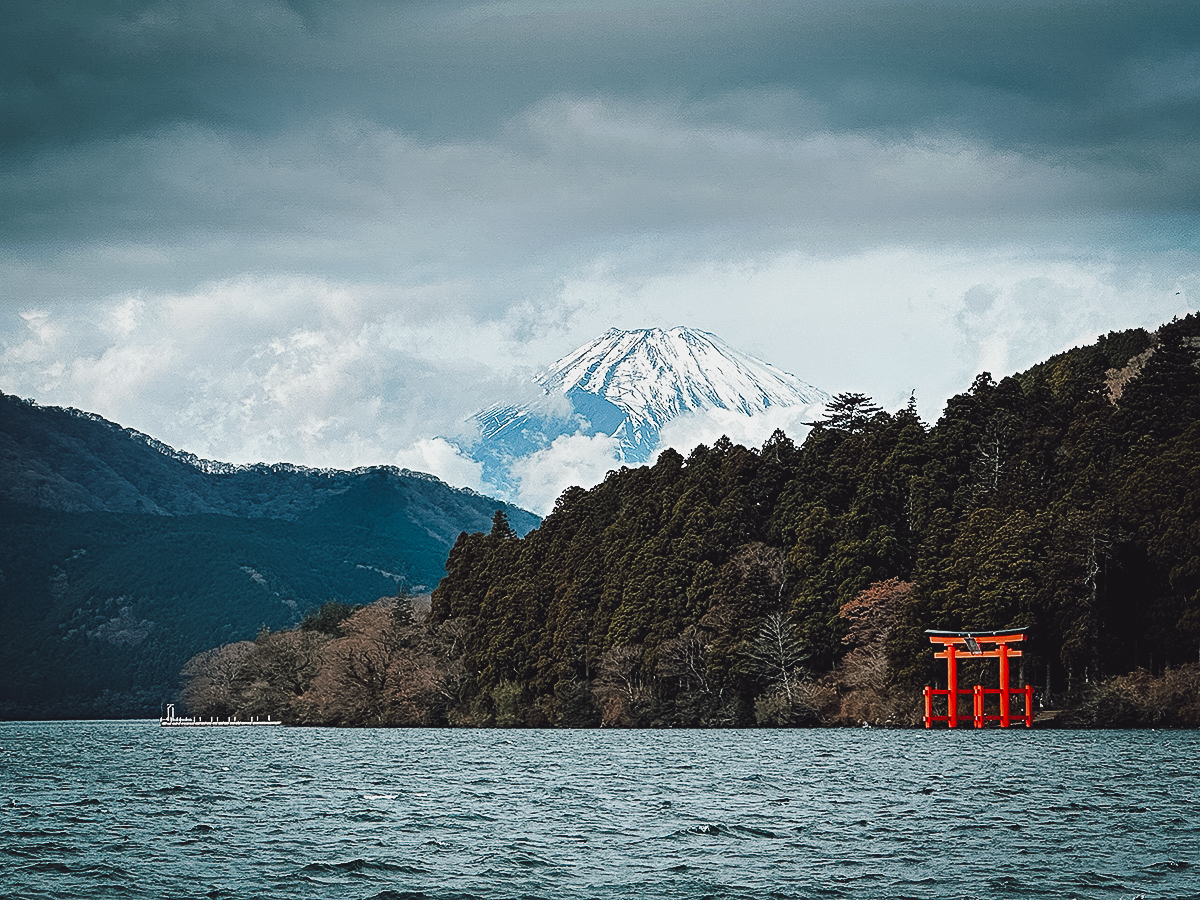
Nikko
The town of Nikko in Tochigi Prefecture is a UNESCO World Heritage Site, famous for its many Shinto shrines and Buddhist temples. A great place for hiking, they’re nestled in a heavily wooded area that becomes especially beautiful in the fall.
The town opens up to an expansive national park spanning three prefectures. There’s plenty to do in Nikko for longer stays but most DIY day trippers will only have time to visit the temples and shrines. Nothing wrong with that considering just how beautiful this place is.
If you’d like to see more of Nikko on a day trip, then consider booking a guided tour with transportation through Get Your Guide or Klook.
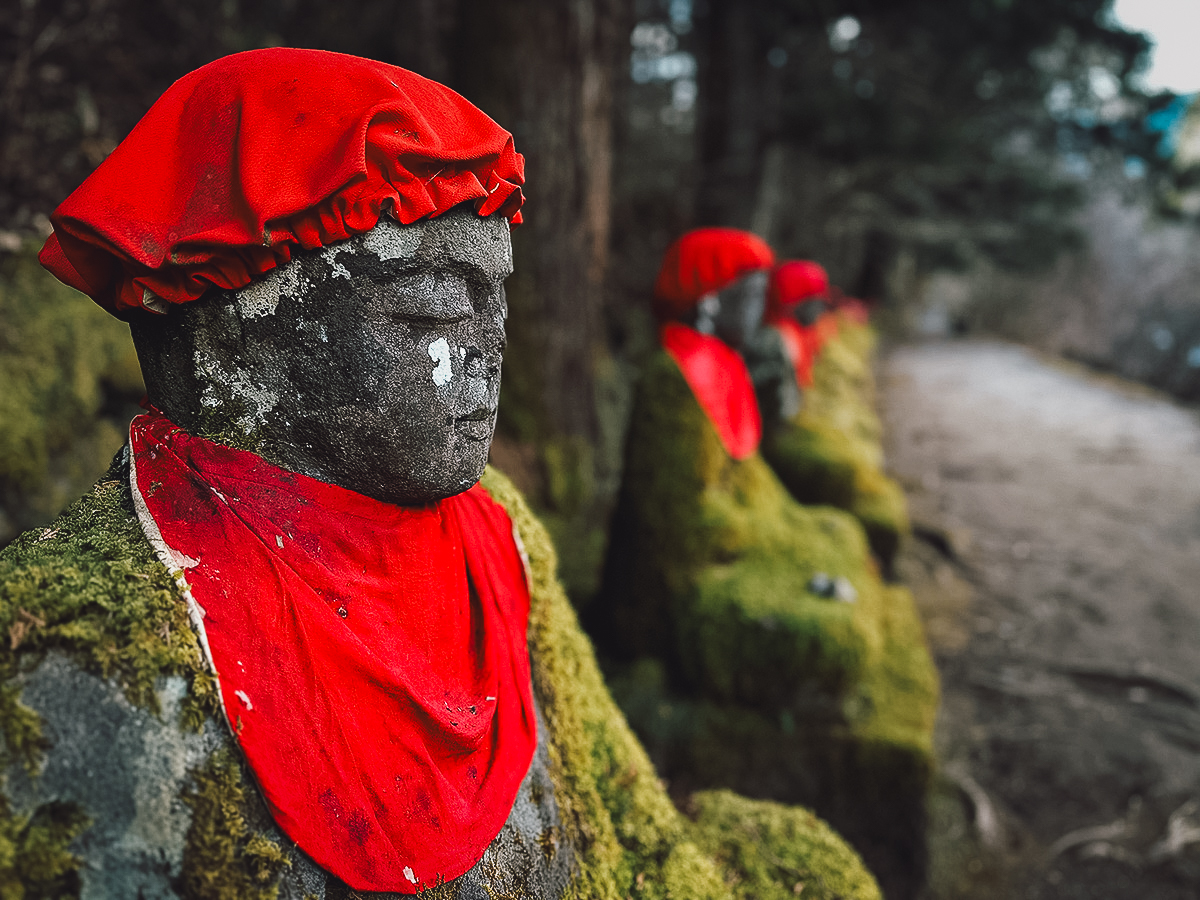
VISIT TOKYO FAQs
Is Tokyo expensive?
Yes, it can be, but probably not as much as you think, especially if you’re from the west.
Hotels in centrally located areas like Shinjuku and Shibuya are more expensive but you can save on accommodations by staying in Sumida, Ueno, or Asakusa. If you’re willing to stay further out, then you can potentially pay even less.
I stayed for three weeks in Saitama Prefecture at a big Airbnb for a fraction of what I would have paid in Shinjuku. It took me around 45 minutes to an hour to commute to central Tokyo every day, but I was willing to make that sacrifice for cheaper accommodations.
Food runs the whole gamut in Tokyo. The best restaurants will cost you a month’s rent but you can eat for cheap at konbinis, supermarkets, and bento shops. To lessen waste, prepackaged meals are sold at a discount later in the day, so the closer you buy to closing time, the cheaper your meal will be.
If you’re visiting Tokyo for a short time, then you can save on transportation costs with a Tokyo Subway Ticket. It’ll give you unlimited rides on the Tokyo Metro and Toei Subway lines (non-JR lines) for 1-3 days.
So yes, while Tokyo is indeed more expensive than most other cities in Asia, it doesn’t have to be. You can travel on a budget and still have an amazing time in Tokyo.
How many days do I need in Tokyo?
This is tough. Tokyo is so big with so much to see and do that no amount of time ever seems enough.
Most people have a limited number of vacation days but if you can manage it, then I’d say at least five days would be good. More if you plan on doing any day trips.
Considering how big Tokyo is and how much time you’ll need to spend in transit, you won’t be able to do everything in five days but you’ll cover enough ground to leave you feeling satisfied, and itching to come back for more.
Is it easy to get around in Tokyo?
Yes, very easy. Though it can be confusing at times, especially for first-time visitors, the metro system in Tokyo is so extensive and efficient that you can get pretty much anywhere using public transportation.
Google Maps will be your best friend in Tokyo. It’s detailed and accurate so use it to plot all your metro or bus rides. And remember, punctuality is paramount in Japanese culture so if the app says that the train will leave at 9:47 am, then more often than not, it WILL leave at 9:47 am.
As described, the Tokyo Subway Ticket can be a great investment if you plan on using the metro a lot. If you’re staying longer in Tokyo and Japan, then a rechargeable IC card is a must. It won’t give you unlimited rides but it’ll save you the trouble of having to line up and pay for single journey tickets each time. Plus, it’ll work on buses and some ferries too.
Pro tip, avoid using the metro during rush hour if you can. They’re packed tight like sardine cans and can be quite chaotic and stressful.
Is there a language barrier in Tokyo?
Yes, like the rest of Japan, but in my experience, never enough to be a problem.
Signs at metro stations and bus stops have English translations. Many restaurants have English menus. If not, then I use Google Translate.
While it’s true that the majority of Japanese people don’t speak English, it isn’t hard to get by in Tokyo with a reliable internet connection and the right apps.
THE FINAL SAY
Tokyo is one of the most exciting cities I’ve been to and arguably the most difficult to encapsulate into a single travel guide.
Not only is the city massive, but it always feel like there’s something cool and interesting to discover somewhere. Rarely have I exited a train station in Tokyo and gotten bored. On long trips, I’m usually fine staying home on some days but never in Tokyo. The fear of missing out is too strong here.
Tokyo can be intimidating at first but plan your trip well and you shouldn’t have anything to worry about.
Disclosure
This Tokyo travel guide contains affiliate links, meaning we’ll earn a small commission if you make a booking at no extra cost to you. We only recommend products and services that we use ourselves and firmly believe in. We really appreciate your support as it helps us make more of these free travel guides. Arigato gozaimasu!

